Order Falconiformes Scientific name Falco cherrug Rank Species | Phylum Chordata Subgenus (Hierofalco) Higher classification Falcon | |
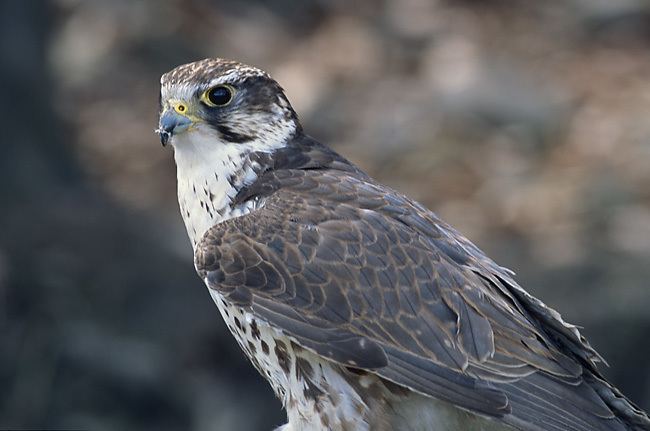 | ||
Similar Bird, Lanner falcon, Eastern imperial eagle, Peregrine falcon, Red‑footed falcon | ||
Khan the saker falcon growth and development
The saker falcon (Falco cherrug) is a large species of falcon. This species breeds from eastern Europe eastwards across Asia to Manchuria. It is mainly migratory except in the southernmost parts of its range, wintering in Ethiopia, the Arabian peninsula, northern Pakistan and western China.
Contents
- Khan the saker falcon growth and development
- Saker falcon arab falconry
- Etymology
- Description and systematics
- Ecology and status
- In culture
- Use in falconry
- References
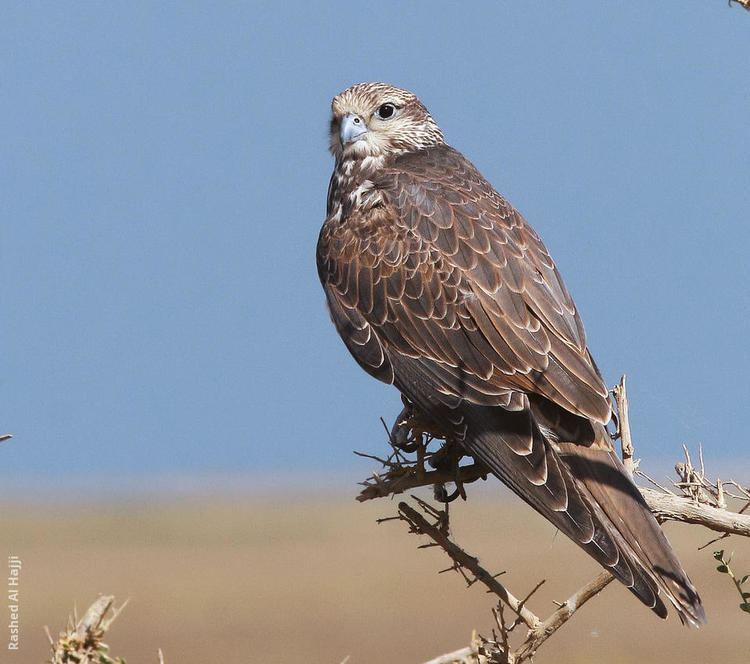
Saker falcon arab falconry
Etymology
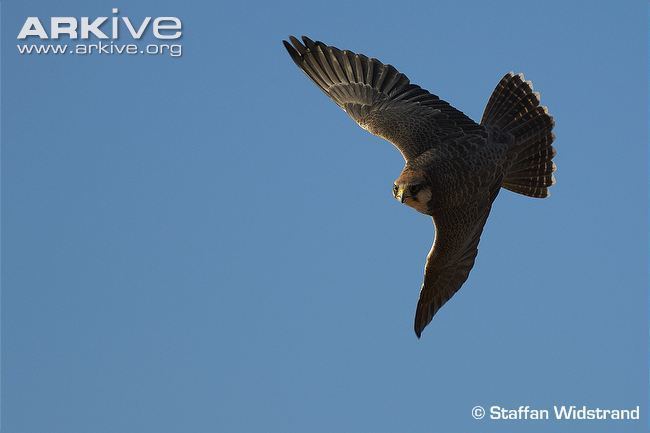
The specific part of the scientific name, cherrug, comes from the Hindi name charg for a female saker. The common name saker comes from the (Arabic: صقر, translit. Ṣaqr) meaning "falcon".
Description and systematics
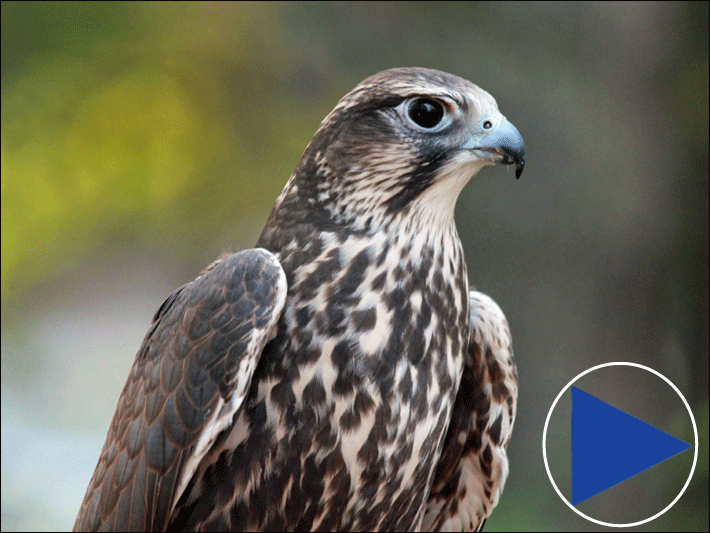
The saker falcon is a large hierofalcon, larger than the lanner falcon and almost as large as gyrfalcon at 47–55 cm (19–22 in) length with a wingspan of 105–129 cm (41–51 in). Its broad blunt wings give it a shadow similar to gyrfalcon, but its plumage is more similar to a lanner falcon's.
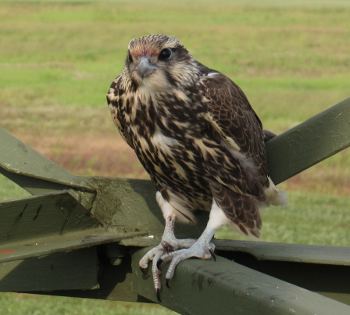
Saker falcons have brown upperbellies and contrasting grey flight feathers. The head and underparts are paler brown, with streaking from the breast down. Males (called sakrets in falconry) and females are similar, as are young birds, although these tend to be a duller brown. The call is a sharp kiy-ee.
Adults can be distinguished from the similar lanner falcon since the lanner is blue-grey above with a reddish back to the head. However, juveniles of the two species can be very similar although the saker falcon always has a uniformly buff top of the head with dark streaks, and a less clear pattern on the sides of the head.
A further complication is that some Asian birds have grey barred upperparts; these must be separated from lanner on size, structure, and a weaker moustache stripe. Saker falcons at the northeast edge of the range in the Altai Mountains are slightly larger, and darker and more heavily spotted on the underparts than other populations. These, known as the Altai falcon, have been treated in the past either as a distinct species "Falco altaicus" or as a hybrid between saker falcon and gyrfalcon, but modern opinion (e.g. (Orta 1994)) is to tentatively treat it as a form of saker falcon, until comprehensive studies of its population genetics and ecology are available.
This species belongs to the close-knit hierofalcon complex. In this group, there is ample evidence for rampant hybridization and incomplete lineage sorting which confounds analyses of DNA sequence data to a massive extent; molecular studies with small sample sizes can simply not be expected to yield reliable conclusions in the entire hierofalcon group. The radiation of the entire living diversity of hierofalcons seems to have taken place in the Eemian interglacial at the start of the Late Pleistocene, a mere 130,000–115,000 years ago; the saker falcon represents a lineage that expanded out of northeastern Africa into the interior of southeastern Europe and Asia, by way of the eastern Mediterranean region.
In captivity, lanners and sakers can interbreed, and gyrfalcon-saker hybrids are also available (see bird flu experiment described in "Ecology and status").
A Hungarian mythological bird, the Turul, was probably a saker falcon (kerecsensólyom).
Ecology and status
The saker falcon is a raptor of open grasslands preferably with some trees or cliffs. It often hunts by horizontal pursuit, rather than the peregrine's stoop from a height, and feeds mainly on rodents and birds. In Europe, ground squirrels and feral pigeons are the most common prey items. This species usually builds no nest of its own, but lays its 3–6 eggs in an old stick nest in a tree which was previously used by other birds such as storks, ravens or buzzards. It also often nests on cliffs.
BirdLife International categorises this bird as endangered, due to a rapid population decline, particularly on the central Asian breeding grounds. Ever since the collapse of the Soviet Union, the United Arab Emirates have been the main destination for thousands of falcons caught and sold illegally for hefty sums at the black market. Kazakhstan is estimated to lose up to 1,000 saker falcons per year.
The species also faces pressure from habitat loss and destruction. The population was estimated to be between 7,200 and 8,800 mature individuals in 2004. In the United States there are several captive breeding projects. There are currently several successful breeding projects by falconers in Canada. The most dramatic decline of the saker falcon in Asia has been in Kazakhstan and Uzbekistan. In contrast, a strongly protected and relatively abundant population persists in Hungary.
Saker nests support a species-rich assemblage of commensal insects.
Saker falcons are known to be very susceptible to avian influenza, individuals having been found infected with highly pathogenic H5N1 (in Saudi Arabia) and H7N7 (in Italy) strains. Therefore, an experiment was done with hybrid gyr-saker falcons, which found that 5 falcons vaccinated with a commercial H5N2 influenza vaccine survived infection with a highly pathogenic H5N1 strain, whereas 5 unvaccinated falcons died. This means that sakers could be protected from bird flu by vaccination, at least in captivity.
In culture
Saker falcon is the national bird of Hungary, known as Turul in the Hungarian mythology. In 2012, the saker falcon was selected as the national bird of Mongolia.
In Disney's Mulan, the Hun Leader Shan Yu owns a saker falcon called Hayabusa.
In the children's book Tiger Wars by Steve Backshall one of the main characters is called Saker after the Falcon
Use in falconry
The saker falcon has been used in falconry for thousands of years, and like its very close relative the gyrfalcon is a highly regarded falconry bird. Swift and powerful, it is effective against medium and large game bird species. In recent years hybrids of saker falcons and peregrine falcons have been developed in order to provide falconers a bird with greater size and horizontal speed than the peregrine, with greater propensity for diving stoops on game than the saker.
